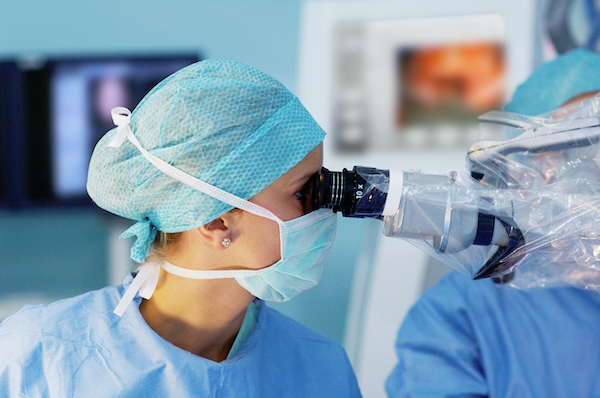Rathke's Cleft Cyst
The OHSU Pituitary Center provides comprehensive care for Rathke’s cleft cyst, a rare pituitary disorder. You’ll find:
- Pituitary specialists who will work together to care for your exact needs.
- Skilled neurosurgeons who offer minimally invasive techniques for easier recovery.
- A high-volume center that treats more than 1,500 patients with pituitary disorders a year, giving us uncommon expertise that leads to better results.
- Providers who are refining care for patients with Rathke’s cleft cyst based on their own innovative research.
Learn more about:

Understanding Rathke’s cleft cyst
What is Rathke’s cleft cyst?
A cyst is a fluid-filled sac or growth. In Rathke’s cleft cyst, a cyst forms in a pituitary gland gap called Rathke’s pouch.
Normally, the pouch closes before birth as two structures come together to form the pituitary gland. The gland, a pea-size structure at the base of the brain, controls hormones. If the two parts don’t fully close, an opening (or cleft) remains where a cyst can form.
Often, these cysts cause no symptoms. Rarely, the cyst presses on the pituitary gland or on an optic nerve, disrupting hormones or causing vision problems and other symptoms. Scientists don’t know what causes cysts to form.
Who gets Rathke’s cleft cyst?
These cysts appear more often in women. Although they are present from birth, they are typically not diagnosed until adulthood, when they may start causing symptoms.
Symptoms and complications of Rathke’s cleft cyst
If you have Rathke’s cleft cyst, you may not have any symptoms or need any treatment. Often, doctors identify the cyst when someone has an MRI for another reason.
If the cyst grows, though, it can press on the pituitary gland or an optic nerve. It can cause symptoms that include:
- Headaches
- Vision changes, such as blurry vision, loss of peripheral vision or loss of vision.
- Pituitary failure (hypopituitarism). Depending on the hormones involved, symptoms can include:
- Low sex drive
- Loss of menstrual period
- Loss of body or facial hair
- Growth changes
- Weight gain or loss
- Body temperature issues
- Fatigue
- Confusion or other mental changes
- Loss of appetite
Diagnosing Rathke’s cleft cyst
Exam: We begin with a physical examination and ask you about your symptoms and medical history.
Blood test: We will measure the level in your blood of hormones, including:
- Prolactin
- Cortisol
- Adrenocorticotropic hormone (ACTH)
- Insulin-like growth factor-1 (IGF-1)
- Thyroid-stimulating hormone and free T4
- Luteinizing hormone
- Follicle-stimulating hormone (FSH)
- Testosterone
- Estradiol
Tests for adrenal insufficiency: We also check for this condition, in which the adrenal glands don’t make enough hormones. Our research found that many women with Rathke’s cleft cyst may also have undiagnosed adrenal insufficiency.
Imaging: Most often, we recommend an MRI scan to find a cyst. Scans can also rule out other causes of your symptoms, such as a pituitary adenoma or a craniopharyngioma.
Vision testing: We’ll recommend seeing a neuro-ophthalmologist if you’re having vision issues. This doctor specializes in the connection between vision and the nervous system.
Rathke’s cleft cyst treatments
If the cyst is small and not causing symptoms, we will probably recommend only close monitoring. If it starts to grow, we may recommend surgery.
Surgery
Our highly skilled neurosurgeons offer an advanced, minimally invasive procedure called transsphenoidal surgery. The neurosurgeon reaches the cyst through the nose and drains or removes it. This offers you no visible scarring and an easier recovery than with other types of surgery.
In 80-95% of cases, surgeons can remove the cyst completely. After surgery, you will need periodic MRIs to check for regrowth. About 20% of Rathke’s cleft cysts grow back over the next decade.
Learn more
- Rathke’s Cleft Cyst, Pituitary Network Association
For patients
- Referral: To become a patient, please ask your doctor for a referral.
- Questions: For questions or follow-up appointments, call 503-494-4314.
Location
Parking is free for patients and their visitors.
OHSU Pituitary Center
Center for Health & Healing Building 1
3303 S. Bond Ave.
Portland, OR 97239
Map and directions
Refer a patient
- Refer your patient to OHSU.
- Call 503-494-4567 to seek provider-to-provider advice.
- See more pituitary information for health care professionals.
- OHSU Provider’s Guide to Pituitary Disorders